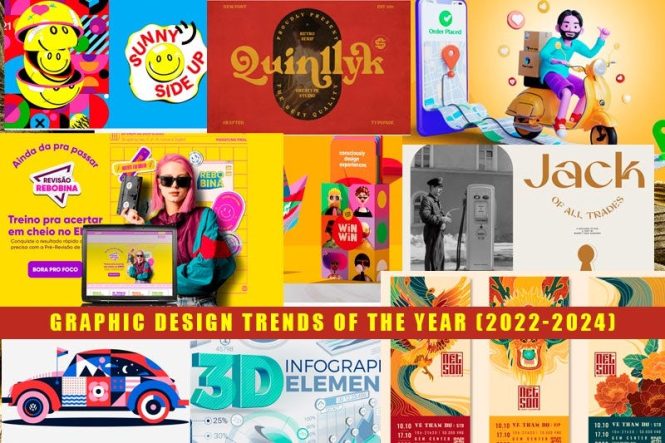

Are graphic designers in demand in 2025? Absolutely! The visual landscape is constantly evolving, and skilled graphic designers are more crucial than ever for businesses looking to connect with their audiences. This article delves into the current demand, future trends, and essential skills needed to thrive in this creative field. We’ll explore factors driving the demand, the changing nature of the industry, and how to position yourself for success in 2025 and beyond. We’ll also offer practical advice for aspiring and established graphic designers to navigate this competitive yet rewarding profession.
The Ever-Growing Importance of Visual Communication
The Rise of Visual Content
The need for compelling visuals is at an all-time high. In today’s digital age, where attention spans are shorter than ever, businesses rely heavily on engaging visuals to capture and maintain interest. From social media posts to product packaging, effective graphic design plays a vital role in conveying messages, building brands, and driving conversions. The demand for skilled professionals who can translate complex ideas into visually appealing and easily understandable formats is consistently strong.
Evolving Trends Shaping the Design Landscape
Design Trends in 2025 and Beyond
Graphic design is a dynamic field, constantly adapting to new technologies and creative trends. In 2025 and beyond, we can expect to see a continued emphasis on user experience (UX) and user interface (UI) design in web and app development. The fusion of 2D and 3D design elements will gain prominence. Data visualization and interactive designs will also take a leading role in conveying complex information. Furthermore, sustainable design practices and eco-conscious visuals will become increasingly important, reflecting growing consumer awareness.
Staying Ahead of the Curve: Essential Skills
Mastering Essential Tools and Software
In today’s competitive landscape, staying ahead requires continuous learning. Mastering industry-standard design software like Adobe Photoshop, Illustrator, and InDesign is crucial. Understanding and utilizing other software like Figma for collaborative design is equally important. Graphic designers must also develop strong communication skills to effectively collaborate with clients and team members, including understanding clients’ needs and translating their concepts into visuals. Design thinking and problem-solving skills are also key components for success.
Exploring Niche Markets for Growth
Specialized Design Areas for Potential
The graphic design industry offers many specialized areas for expertise. For example, specializing in user interface (UI) design for mobile apps or user experience (UX) design for websites can be a rewarding path. UI/UX designers are in high demand as businesses strive for seamless and intuitive digital experiences. Furthermore, specializing in areas like motion graphics, animation, and web design can also enhance career prospects. Expertise in a niche market can give you a competitive edge.
The Future of Graphic Design: Challenges and Opportunities
Embracing Technological Advancements
The graphic design industry is evolving rapidly. Staying updated with the latest tools, techniques, and industry trends is essential. Integrating AI tools, like generative design software, presents both challenges and opportunities. Adaptability, learning agility, and a willingness to embrace new technologies will define success in this field. A crucial point is knowing how to use these tools without sacrificing creativity.
Q: What are some common career paths for graphic designers?
A: Graphic designers can work in various settings, including agencies, corporations, and freelance. Some graphic designers choose to specialize in areas like UI/UX design, web design, branding, or even product design. Each area has specific skills needed to excel, and the job market is always looking for talent in any of these sectors.
Q: How can I stand out from other candidates in a competitive job market?
A: Showcase your portfolio effectively! Showcase diverse and high-quality projects. Highlight your ability to solve problems creatively and translate clients’ ideas into compelling visuals. Build strong professional networks, attend industry events, and actively demonstrate your passion for design.
Q: What is the salary outlook for graphic designers in 2025?
A: Salary ranges can vary significantly based on experience, specialization, location, and the type of employer (agency vs. corporate). Salaries tend to increase with experience and specialized skills. In general, designers with unique expertise and demonstrable results often earn above-average compensation.
Frequently Asked Questions
Q: How can I ensure my skills remain relevant in the face of technological advancements?
A: Continuous learning is key. Follow industry blogs, attend workshops, and pursue online courses to stay updated on the latest software, trends, and techniques. Experiment with new tools and don’t be afraid to push creative boundaries. Look for opportunities to learn new tools and software, such as AI-powered design tools.
In conclusion, graphic designers remain highly in-demand in 2025 and beyond. The need for visual communication professionals is consistently strong, adapting to evolving technologies and creative trends. If you’re passionate about design and have the skills to translate ideas into compelling visuals, consider pursuing a career in graphic design. Further research into specific design niches and continuous skill development will ensure continued success in this dynamic field. Explore relevant certifications and online courses to stay ahead of the curve.